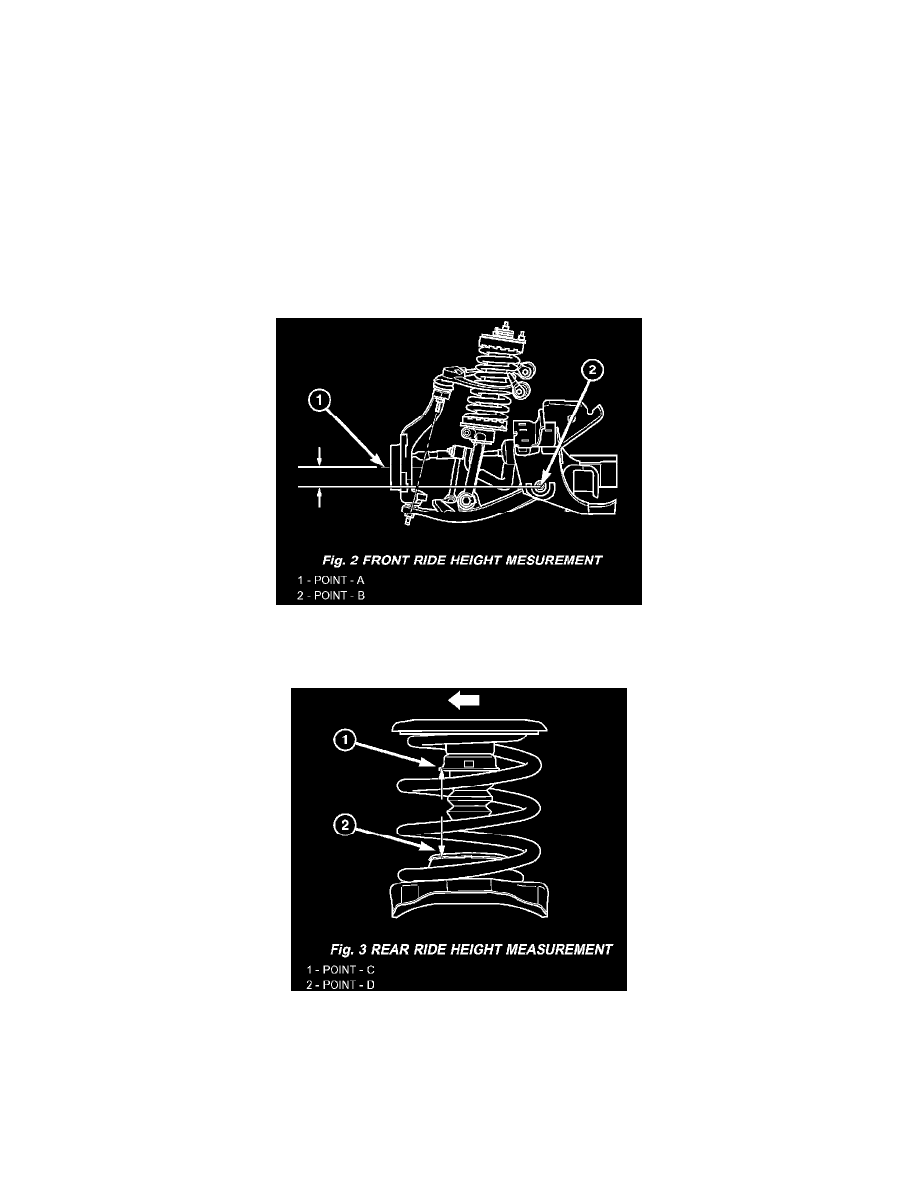Liberty Sport 4WD L4-2.4L VIN 1 (2002)

Alignment: Service and Repair
Curb Height Measurement
STANDARD PROCEDURE - HEIGHT MEASUREMENT
RIDE HEIGHT
NOTE: The suspension is non-adjustable.
The vehicle suspension height should be measured before performing wheel alignment procedure. Also when front suspension components have been
replaced. This measure must be performed with the vehicle supporting it's own weight and taken on both sides of the vehicle. Front and rear ride
heights are not adjustable. The spring selections at assembly determine ride height for acceptable appearance of the vehicle. Ride height dimensions
assume full fluids (including fuel) and zero passengers. Refer to the front ride height dimensions.
Vehicle ride height audits should be performed utilizing the following procedure:
1. Drive the vehicle straight and forward on a non-tacky surface for a minimum of 20 feet to neutralize track width.
2. Bounce the front of the vehicle five times.
3. Measure and record the dimensions
FRONT RIDE HEIGHT Front ride height is defined by the relative vertical distance between the spindle center line and the rear pivot point of the
front lower control arm to cradle attachment. The spindle center line is to be measured at the outer wheel face (point A). The rear pivot point is to
be measured at the center of the cam bolt (point B) at its rearward most end (nut end).
REAR RIDE HEIGHT Rear ride height is defined by the relative vertical distance between the top of the lower spring seat strike surface and the
bottom of the jounce cup (true metal to metal jounce travel). This is to be measured vertically inside the coil from the point intersecting the
inboard edge and the for/ aft center of the jounce cup (point C) down to the strike surface (point D).
